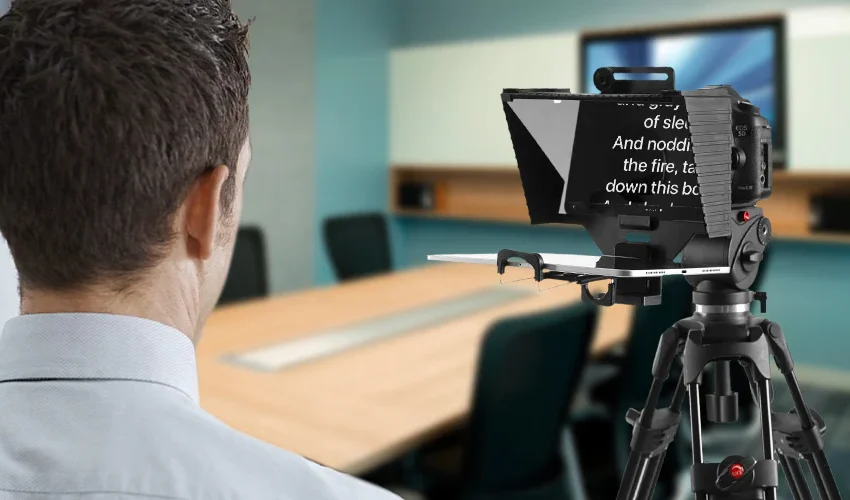Teleprompters: The beast of broadcast journalism

By Okoye Peter
The business and practice of journalism have greatly evolved since the early 20th century to a practice that significantly been digitized. Broadcast journalism is one of the major professions that have greatly been influenced by the recent technological revolution of the 21st century.
ICT has become the linchpin of journalism practice today and it has helped spread its tentacles to a very far-reaching extent. One of the major changes the ICT revolution brought to broadcast journalism is the introduction of a device called a “Teleprompter”.
In the late 19th and early 20th centuries, news reading and programme presentations on TV were done solely with the use of printed texts. News anchors have to read the bulletins looking in a two way fashion between the camera recording them and the papers in front of them.
This practice, so to say, have posed big challenges to news anchors in the sense that they will have to face the daunting task of looking at two objects which is the bulletin and the camera facing them in quick successions because they will have to read the news in a way that connotes it is for the audience.
Most times, while doing this, they make grave mistakes in the presence of a live telecast which is embarrassing on most occasions. However, pundits in the media profession would refer to the advent of teleprompters as a “professional salvation” that has come to salvage the practice of TV broadcasting in the industry.
Now to the crux of the matter, a teleprompter also known as “autocue”, is a display device that prompts someone speaking with an electronic visual text of a speech or script, that is, it makes one to read the contents by displaying what to read to the person. The screen of the teleprompter is usually below the lens of a professional video camera in order to help a presenter to maintain eye contact with the anonymous audience while looking directly at the camera. Because of this, the teleprompter creates the illusion that the presenter has memorized the speech.
Historically, the Teleprompter Corporation was founded in the 1950s by Fred Barton Jr, Hubert Schlafy and Irving Berlin Kahn. Barton was an actor who suggested the concept of a teleprompter as a means of assisting television professionals who had to memorize large amounts of materials in a short time. Schlafy built the first teleprompter in 1950. The teleprompter was used for the first time on December 4, 1950, on filming the CBS soap “The First Hundred Years”.
The teleprompter is professionally used by news anchors, television presenters, video creators, teachers, public speakers and even politicians during their respective renditions to the public.
Conclusively, this device is one that have revolutionized the art of presentation in broadcast journalism which have also given a soft landing to its users.
A beast of broadcast journalism indeed!!!.

